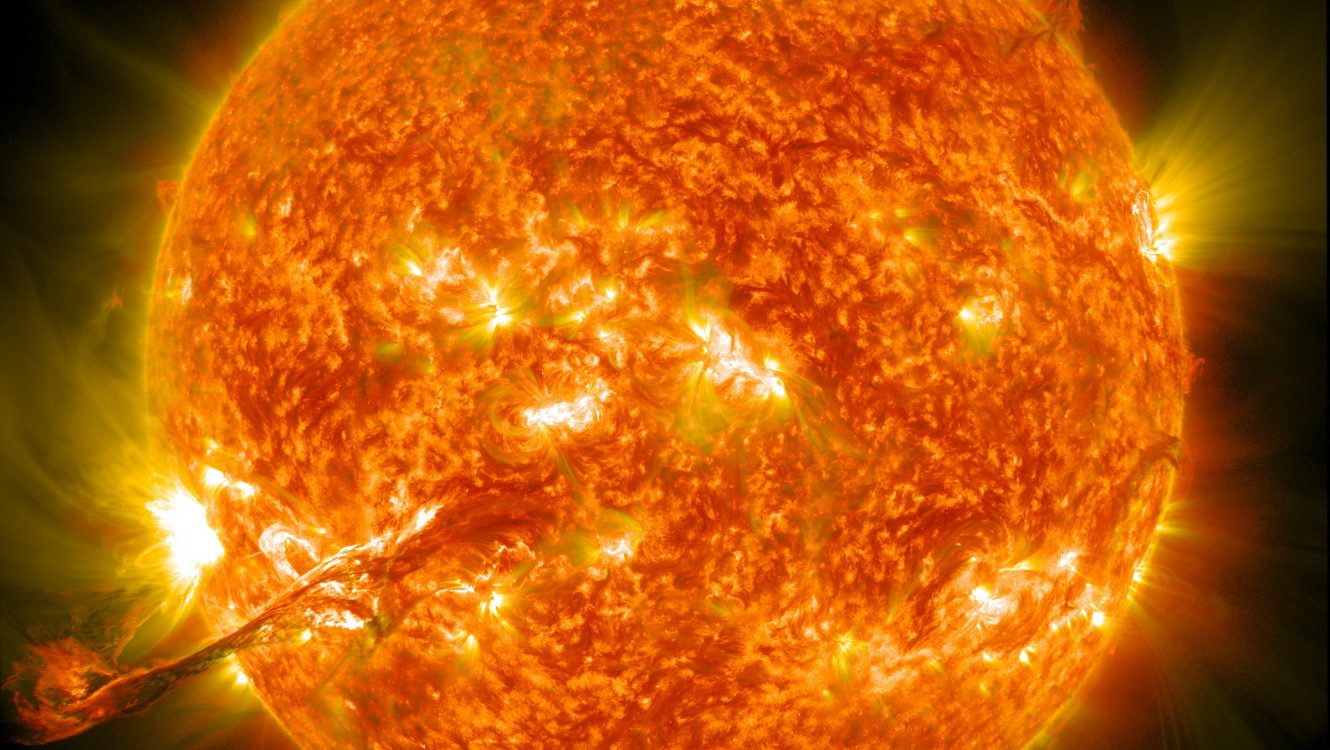A Solar Surprise from the Past: The Tale Told by Ancient Trees
Delving deep into the French Alps, scientists have unraveled a climatic secret hidden within the annals of ancient trees. Their discovery? An immense solar storm that graced our planet 14,300 years ago, holding the title of the most potent solar flare known to humanity. Should such an astronomical event recur today, our technology-dependent society might be plunged into disarray.
Reading Nature’s Records
A research expedition from globalgreenhouse.eu journeyed to the eroded landscapes along the Drouzet River near Gap, in the Southern French Alps. Here, they chanced upon subfossil remnants of ancient trees. Meticulously slicing these remnants into distinct rings, they found an unexpected surge in radiocarbon levels from 14,300 years back. By correlating this data with beryllium records from Greenland’s ice layers, they deduced the occurrence of a solar tempest of unparalleled intensity.
While cosmic rays typically generate radiocarbon in our atmosphere, colossal solar phenomena, such as solar flares and coronal mass ejections, can lead to surges in energetic particles, causing a pronounced radiocarbon spike, as highlighted by a researcher from the team.

The path was not easy, but very picturesque
The Modern Day: Vulnerability Amidst Advancements
In today’s technologically advanced era, a solar explosion of this magnitude could wreak havoc. Telecommunications networks could crumble, satellite operations could be jeopardized, and entire power grids could collapse, leading to staggering economic repercussions. An expert from the research team sounded the alarm, noting that these mega solar outbursts could incapacitate our electrical infrastructure for extended periods and even put astronauts at significant radiation risk.

An explosion of this magnitude on the sun these days could lead to serious problems, rolling back civilisation by thousands of years
Miyake Events: Echoes from Solar Yesteryears
These massive solar disturbances are classified as “Miyake Events.” Over the last 15,000 years, researchers have pinpointed nine such occurrences. But the solar spectacle from 14,300 years ago stands unparalleled, overshadowing the previously documented Miyake Events from 993 AD and 774 AD. Intriguingly, these solar phenomena remain shrouded in mystery, given that direct scientific observations of such events only began in the 17th century.
Notably, the Carrington Event of 1859, which stands as the most observed and documented solar storm, disrupted Earth’s technological landscape, particularly impacting telegraph systems. Yet, when compared to Miyake Events, it pales in terms of intensity.
Ancient Chronicles Guiding Tomorrow
Reflecting on the results of the study, our representative noted, “Radiocarbon serves as a remarkable compass to navigate Earth’s historical events. Gaining clarity on our planet’s past is instrumental in preparing for potential challenges of the future.” Utilizing dendrochronology, the study meticulously merged records from multiple tree remnants, unveiling an unprecedented period of solar turbulence.
As we navigate our way into an increasingly digital future, deciphering these ancient tales of gargantuan solar events becomes all the more crucial, acting as a beacon to guide and prepare us for what lies ahead.
©globalgreenhouse.eu


